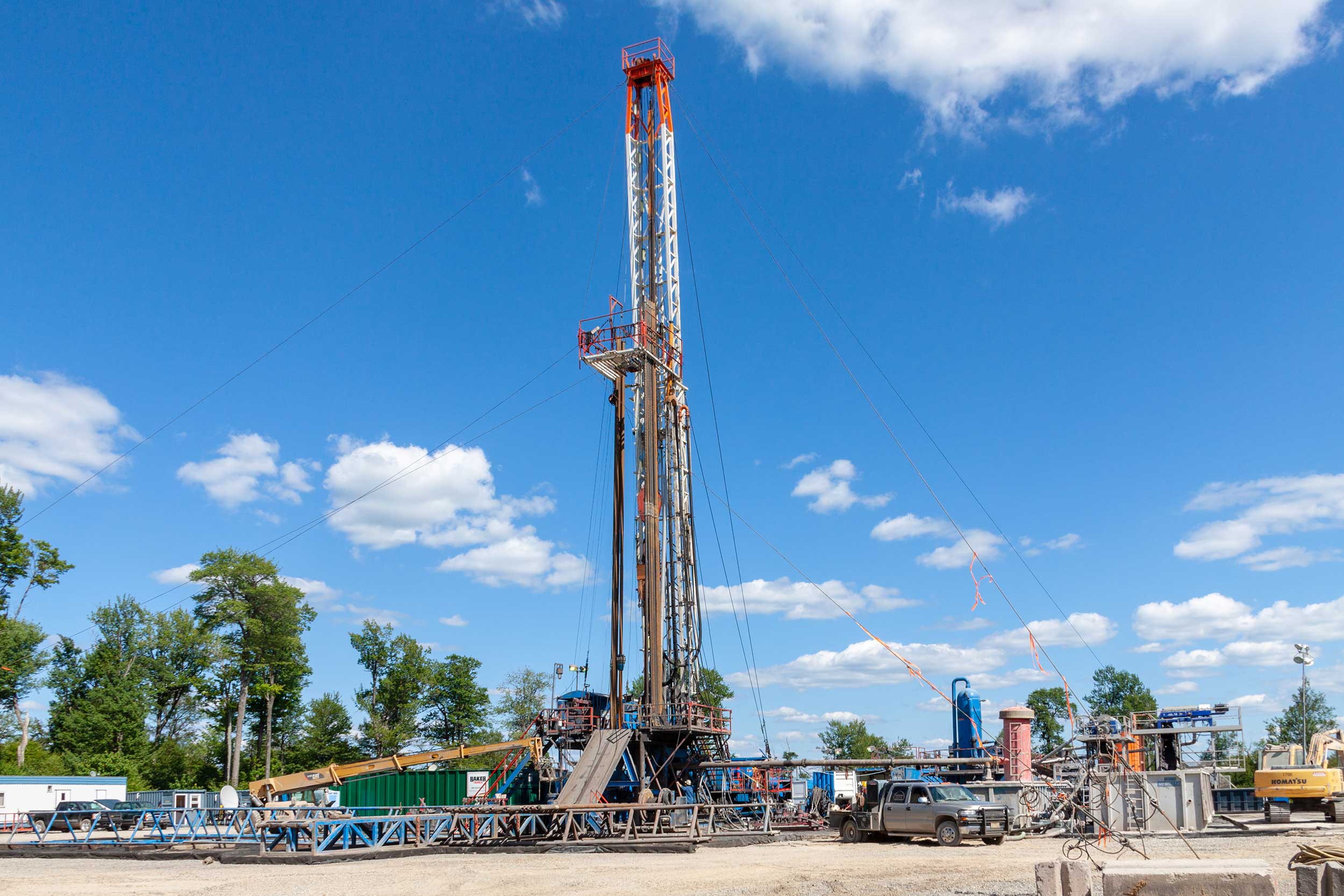New York became the first state with natural gas reserves to ban hydraulic fracking a decade ago, after a statewide health investigation revealed the methods were releasing toxic pollutants into the air and water. Now, three years after the ban officially went into effect, fossil fuel company Southern Tier Solutions is touting an alternative fracking method that skirts the current regulations. The pitch: Trade fracking with water for fracking with captured carbon dioxide. Here’s what that means for the environmental impact of their plans:
Want more Earth-saving knowledge?
SUBSCRIBE to the one5c newsletter here
How does fracking work?
Hydraulic fracking involves blasting large amounts of water, sand, and chemicals deep beneath Earth’s surface to create cracks in rock formations, thus freeing up oil and natural gas. The methods are linked to a host of environmental and public health concerns—from water and air pollution to respiratory disease, and even increased risk of childhood cancer. The fracking boom during the 20th century also contributed to a global spike in atmospheric methane—a fast-acting greenhouse gas that traps more than 80 times as much heat in the atmosphere as carbon dioxide, particularly in the first two decades after its release.
How is this method different?
Instead of water, CO2 fracking injects carbon dioxide into the ground. The method condenses trapped carbon into liquid and uses it to push methane to the surface. Southern Tier’s proposal would tap thousands of gas wells spread out over 1 million acres.
Some lawmakers and environmental advocates say the new technology is just hydrofracking by a different name, and that the promise of carbon sequestration is meant to distract from the fact that this is, indeed, fossil fuel development. While some studies have shown that using CO2 could be more planet-friendly than typical fracking methods because of its ability to store carbon, the practice still poses many of the same health and environmental risks, like water and air pollution. At the same time, pulling in CO2 (aka direct air capture) is still a relatively nascent and expensive practice.
How are lawmakers responding?
Energy companies have tried to sidestep New York’s fracking ban before, often in an attempt to tap into the natural gas reserves in the Marcellus Shale, which stretches from New York to West Virginia. This 390-million-year-old rock formation is the largest source of shale-derived natural gas in the U.S., responsible for more than 20% of the nation’s output.
This time, representatives are fighting back. New York state Sen. Liz Krueger, Sen. Lea Webb, Assembly Member Anna Kelles, and Assembly Member Donna Lupardo introduced a bill to ban drilling for gas using CO2 earlier this month. Their proposal adds just three words to the original text: “and carbon dioxide.”
“The solution to the climate crisis is to stop emitting greenhouse gases, not to use one greenhouse gas to help you extract another one from the ground,” Krueger said in a recent press release. New York state may be the first to bump into this particular issue, but they may not be the last to raise the greenwashing flag on pairing carbon capture and fracking.

